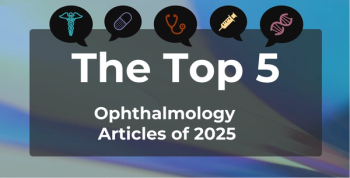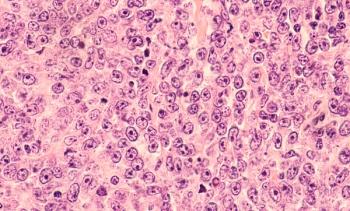
"Alarming Rise" of Global MASH-Related Primary Liver Cancer Incidence Since 2000
Key Takeaways
- Metabolic dysfunction–associated steatohepatitis (MASH) is a significant contributor to primary liver cancer, a major cause of cancer-related deaths worldwide, with limited global data available.
- From 2000 to 2021, MASH-related primary liver cancer saw substantial increases in disability-adjusted life-years, incidence, and mortality, with notable geographic and sociodemographic disparities.
The investigators believe their decades-spanning analysis underscores the need to address access barriers to anti-obesity therapeutics.
Over the last 20 years,
Although MASH remains one of the more prevalent causes contributing to liver transplants throughout the US, influenced by the creation of a chronically inflamed liver state, data on global incidence is lacking.2 Expanding clinical knowledge, and gathering worldwide data, in this area is an important research venture. As the present authors outline, PLC is responsible for the fourth-most cancer-related deaths around the globe, amounting to 830,200 deaths in 2020, and is the sixth most frequently diagnosed form of cancer.3
To provide an updated, comprehensive review of MASH-related PLC’s worldwide epidemiology, the present researchers investigated mortality, incidence, and disability-adjusted life-years (DALYs) according to the 2021 Global Burden of Disease (GBD). Study, paying mind to geographic and sociodemographic disparities. A total of 204 territories and countries were considered in the analysis. The sociodemographic index (SDI) was used to classify countries according to their level of development, considering education, fertility rates, and per capita income.1
In 2021, the rates of DALYs for MASH-related PLC were 995,470 (95% uncertainty interval [UI], 808,800-1.2 million); total incidence and mortality amounted to 42,290 (95% UI, 34,030-51,130) and 40,920 (95% UI, 32,960-49,610), respectfully. Their analysis also included age-standardized DALYs (ASDALYs), age-standardized incidence rate (ASIR), and age-standardized mortality rate (ASMR), which were, per every 100,000, 11.50 (95% UI, 9.39-13.84), 0.49 (95% UI, 0.40-0.60), and 0.48 (95% UI, 0.39-0.58), respectfully.
Notably, from 2000 to 2021, MASH-related PLC DALYs, incidence, and mortality grew by rates exceeding 76%, 98%, and 93%. During this time, ASDALYs were steady; however, ASIR (annual percent change [APC], 0.62%; 95% CI, 0.58%-0.67%) and ASMR (APC, 0.46%; 95% CI, 0.33%-0.59%) also rose.
Among female populations, there were 20,540 cases of MASH-related PLC in 2021 (95% UI, 16,750-25,000), as well as 474,890 DALYs (95% UI, 387,450-575,500) alongside 20,460 deaths (95% UI, 16,630-25,000). The ASIRs, ASDAYs, and ASMRs were 0.45 (95% UI, 0.36-0.54), 10.48 (95% UI,8.57-12.63), and (95% UI, 0.36-0.54), respectfully, per every population of 100,000. These rates increased for females by 2021 compared with 2000.
As for male populations, MASH-related PLC incidence was 21,750 (95% UI,17,210–26,960), 520,590 DALYs (95% UI, 405,450–652,530), and 20,470 recorded deaths (95% UI, 16,180–25,360). Their ASIRs, ASDAYs, and ASMRs were 0.54 (95% UI, 0.43-0.68), 12.59 (95% UI,9.89-15.72), and 0.52 (95% UI, 0.41-0.64). By 2021, compared with 2000, ADALYs were steady for males but ASIRs and ASMRs increased.
SDI analysis found that countries falling in the middle of this scale had the greatest prevalence of MASH-related PLC DALYs (n = 343,700), incidence (n – 13,780), and mortality (n = 16, 610). Countries that registered lower on SDI exhibited the highest ASDALYs (16.13; 95% UI, 11.52-22.31), ASIRs (0.62; 95% UI, 0.43-0.85), and ASMRs (0.68; 95% UI, 0.48-0.94).
From 2000 to 2021, low SDI countries also underwent decreases in ASDALYs (APC, –0.40%; 95% CI, –0.48% to –0.31%), ASIR (APC, –0.31%; 95% CI, –0.36% to –0.26%), and ASMR (APC, –0.28%; 95% CI, –0.39% to –0.17%). Those countries falling in the low-middle range exhibited the highest increases in ASDALYs (APC, 1.08%; 95% CI, 0.94% to 1.22%), ASIR (APC, 1.27%; 95% CI, 1.20% to 1.34%), and ASMR (APC, 1.25%; 95% CI, 1.12% to 1.37%).
Reflecting on their findings, the authors stress how these figures indicate an “alarming rise” in PLC related to MASH. “This rise in burden may be attributed to improved detection rates and the metabolic disease epidemic. Improving access to anti-obesity medications, such as glucagon-like peptide-1 receptor agonists and other treatments, could potentially help address metabolic syndrome, [metabolic dysfunction-associated liver disease], and thereby MASH-associated PLC in the future,” they concluded.
References
1. Danpanichkul P, Suparan K, Kaeosri C, et al. Global trend of MASH-associated liver cancer: a systematic analysis from the Global Burden of Disease 2021. Clin Gastroenterol Hepatol. 2024. doi:10.1016/j.cgh.2024.10.026
2. Koh JH, Ng CH, Nah B, et al. NASH is the leading cause of hepatocellular carcinoma in liver transplant candidates. Clin Gastroenterol Hepatol. 2024; 22:197–199.e3. doi:10.1016/j.cgh.2023.05.019
3. Singal AG, Lampertico P, Nahon P. Epidemiology and surveillance for hepatocellular carcinoma: new trends. J Hepatol. 2020;72(2):250-261. doi:10.1016/j.jhep.2019.08.025
Newsletter
Stay ahead of policy, cost, and value—subscribe to AJMC for expert insights at the intersection of clinical care and health economics.







































